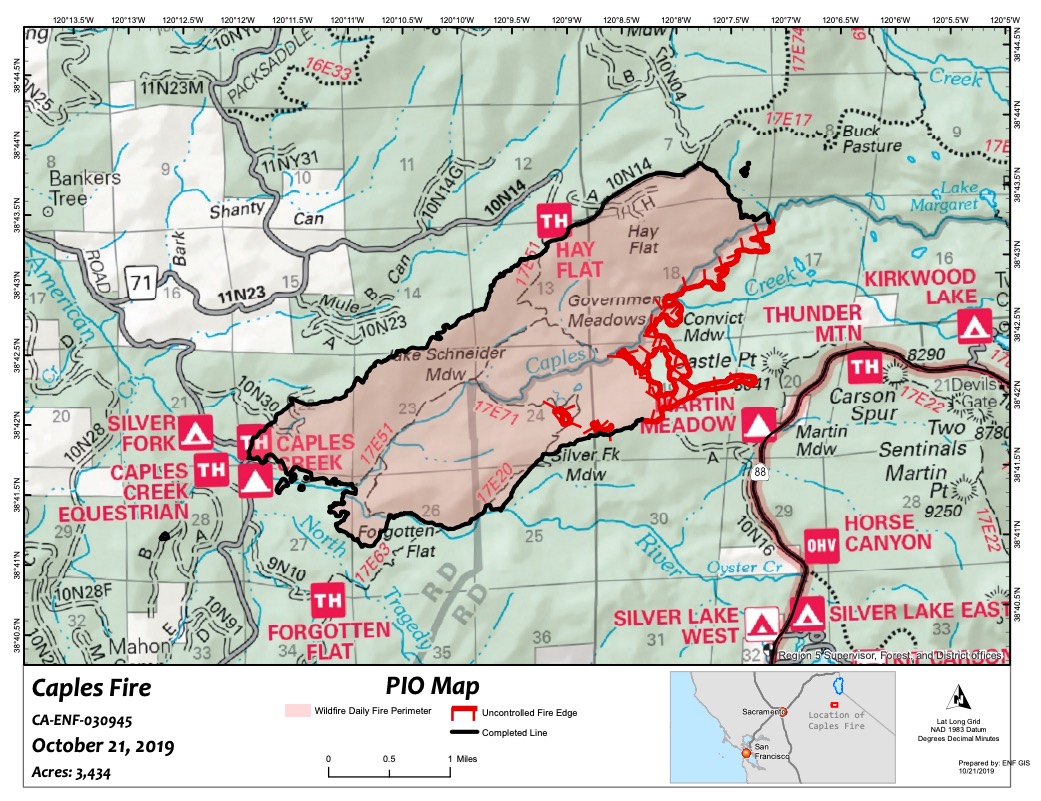

#Cdf fire maps update
The EPA and USFS will update the map layers several times during year, as we respond to feedback and work to improve the map. While these sensors don’t meet the rigorous standards required for regulatory monitors, they can help you get a picture of air quality nearest you especially when wildfire smoke is in your area. The location and geographic extent of projects will be determined based on several factors, including environmental constraints and treatment objectives.Īppendix PD-1 in the Draft PEIR provides a description of Treatable Landscape Modeling.Fire and Smoke Map: The EPA and USFS have created this map to test new data layers of use during fire and smoke events, including air quality data from low-cost sensors. It is important to note that the treatable landscape represents areas suitable for CalVTP vegetation treatments, but projects will not necessarily occur in every location within the treatable landscape. The proposed target of 250,000 annual acres of treatment would occur within the 20.3 million acres of treatable landscape. Throughout this PEIR, this area is called “treatable landscape” or "treatable areas". Using this method, 20.3 million acres within the 31 million-acre SRA were identified that may be appropriate for vegetation treatments as part of the CalVTP. Agricultural vegetation types were also excluded because this land is generally outside the SRA. There are five raster layers: treatable areas in SRA, treatable areas fuel types, modeled treatable areas for ecological restoration, modeled treatable ares for WUI, modeled treatable areas for fuel breaks.Īppropriate areas within which to implement vegetation treatments as part of the CalVTP were identified by dividing state responsibility areas (SRA) into vegetation types from the California Wildlife Habitat Relationship (CWHR) system.Ĭertain vegetation types were excluded because their wildfire risks are negligible (e.g., wet meadow, estuarine). If you experience any problems while trying to access this content please call the CAL FIRE Communications office at 91, or e-mail: data were used in the California Vegetation Treatment Programmatic EIR. However, users are encouraged to refer others to the Department of Forestry and Fire Protection to acquire the maps, in case updated maps become available.ĭue to the nature of this content, some users who require Assistive Technology may experience accessibility issues. There are no restrictions on the distribution of the maps by users. The user will cite the Department of Forestry and Fire Protection as the original source of the maps, but will clearly denote cases where the original maps have been updated, modified, or in any way altered from the original condition. The user will not seek to hold the State or the Department liable under any circumstances for any damages with respect to any claim by the user or any third party on account of or arising from the use of data or maps.

The State of California and the Department of Forestry and Fire Protection make no representations or warranties regarding the accuracy of data or maps.


By downloading from this page, the user agrees to the following terms and conditions.


 0 kommentar(er)
0 kommentar(er)
